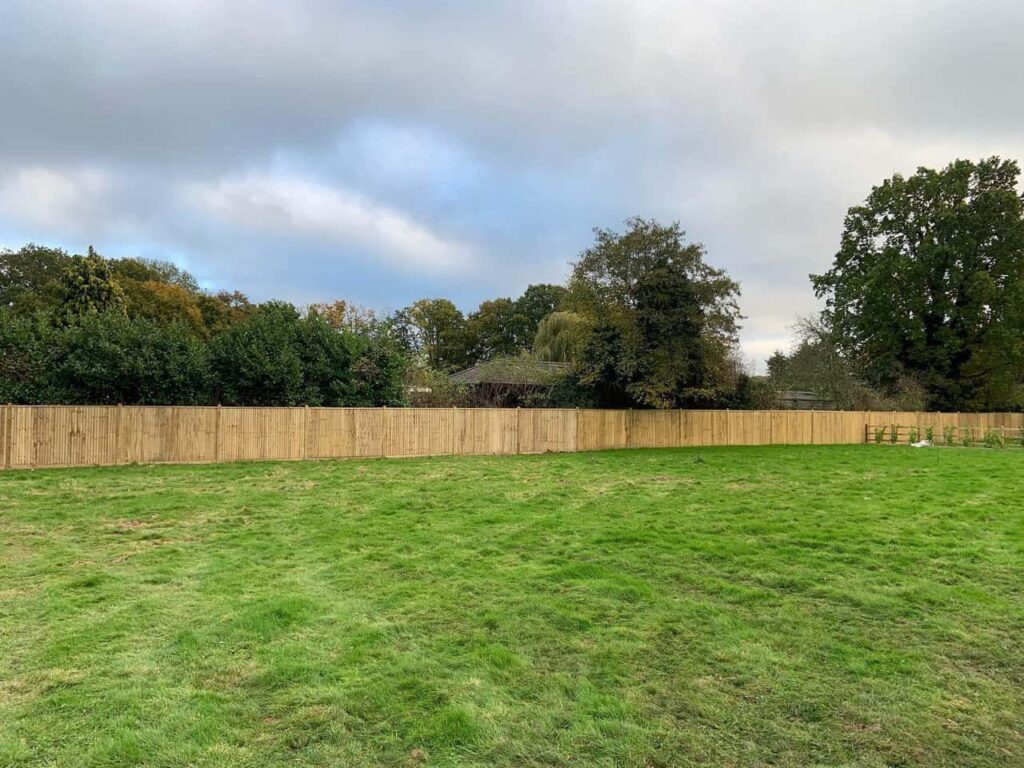How to Identify Structural Weak Points Before They Fail
Fencing plays a crucial role in defining boundaries, protecting property, and enhancing the appearance of your outdoor space. However, even the strongest fence will eventually show signs of wear and strain. Spotting structural weaknesses early can save you from more significant issues later on. At Fast Fix Fencing Swanley, we’ve seen how minor faults can quickly escalate into full fence failures if left unaddressed. Knowing what to look for is key to keeping your fencing strong, secure, and long-lasting.
Why Structural Weak Points Matter
A structurally compromised fence not only affects the visual appeal of your property but can also lead to reduced stability and safety concerns. In areas like Swanley, Kent, where high winds and heavy rainfall are common, even small defects can worsen quickly.
Detecting problems before they become serious helps prevent full replacements and keeps your fence performing as intended.
Common Causes of Structural Weakness
Before identifying weak points, it’s worth understanding what typically leads to structural issues:
- Weather exposure – Strong winds, frost, and rain can loosen posts and warp panels.
- Soil movement – Changes in ground moisture or erosion can cause posts to shift or tilt.
- Poor installation – Incorrect post spacing or shallow foundations weaken long-term stability.
- Lack of maintenance – Neglecting protective treatments allows wood rot and decay to spread.
- Pest activity – Termites or wood-boring insects can hollow out key components unnoticed.
By regularly inspecting your fence, you can identify these threats early and take preventative action.
Key Areas to Inspect
1. Fence Posts
Posts form the foundation of any fence. When they weaken, the entire structure becomes unstable. Look for:
- Movement or leaning posts – A fence that’s tilting in any direction signals a loose base or decayed timber.
- Soft or spongy wood – Press near the ground line; softness often indicates rot.
- Cracking or splitting – These can occur as timber dries out or after frost exposure.
For timber posts, ensure they’re not sitting directly in damp soil. A small gap or use of gravel footing improves drainage and prevents premature decay.
2. Rails and Panels
Rails and panels connect the fence together and provide its strength and shape. Early warning signs include:
- Warping or bowing – Usually caused by moisture absorption or uneven sun exposure.
- Loose nails or fixings – Movement in panels or rattling during wind suggests loose connections.
- Broken or cracked boards – Even a single damaged section can compromise the fence’s alignment.
Regular tightening of fixings and prompt replacement of damaged boards help maintain overall integrity.
3. Fence Joints and Fixings
The points where rails and posts join are especially vulnerable. Check for:
- Corroded metal brackets or screws showing rust or wear.
- Loose joints that shift under pressure, particularly around gate posts or corners.
- Signs of movement where the rails meet the posts, which can weaken stability.
Applying weather-resistant coatings and replacing old fixings helps strengthen these critical junctions.
4. Ground Line and Drainage
The base of the fence — where the posts meet the soil — is often the first area to fail. Poor drainage traps moisture, accelerating decay. Inspect for:
- Pooling water or damp soil after rain.
- Erosion or gaps around the base of posts.
- Vegetation growth that traps moisture and encourages rot.
Simple maintenance such as trimming grass and ensuring adequate run-off can significantly extend the fence’s lifespan.
Signs That Your Fence May Be Failing
Even if damage isn’t immediately visible, certain symptoms often suggest underlying problems:
- Sections of the fence sway when pushed.
- Panels no longer sit level or show uneven spacing.
- Visible gaps appear between rails and posts.
- The fence creaks or shifts during windy weather.
- Algae, moss, or mould growth at the base.
These signs indicate that the structure is under stress and should be assessed before the problem worsens.
Preventative Steps to Strengthen Your Fence
1. Apply Protective Treatments
Weatherproof stains and sealants help protect timber from moisture, UV rays, and pests. Reapply these treatments every few years to maintain durability.
2. Improve Drainage
If your fence line often becomes waterlogged, consider adding gravel trenches or regrading the ground to allow water to run off more effectively.
3. Replace Weak Sections Promptly
Address small faults before they spread. A single rotting post or cracked rail can affect the stability of adjacent panels.
4. Schedule Regular Inspections
Perform a thorough check at least twice a year — ideally before and after winter. This proactive approach helps you stay ahead of any potential issues.
The Importance of Professional Assessment
While many problems can be spotted visually, some structural weaknesses may not be obvious to the untrained eye. A professional fencing contractor, like Fast Fix Fencing Swanley, can assess your fence for hidden damage, ground instability, or substandard fixings.
With expert knowledge, we can identify early signs of decay, advise on reinforcement, and carry out repairs that restore both strength and appearance.
Conclusion
Fences are designed to stand strong against the elements, but even the best-built structures can develop weak points over time. Regular inspections and prompt maintenance are the key to preventing failure.
At Fast Fix Fencing Swanley in Swanley, Kent, we help homeowners maintain durable, reliable fencing that looks great and performs perfectly year after year. Whether you need expert repairs or a full structural inspection, our experienced team ensures your fence remains secure, stable, and built to last.
Call us on: 01322 952 295
Click here to find out more about Fast Fix Fencing Swanley
Click here to complete our contact form and see how we can help with your fencing needs.

